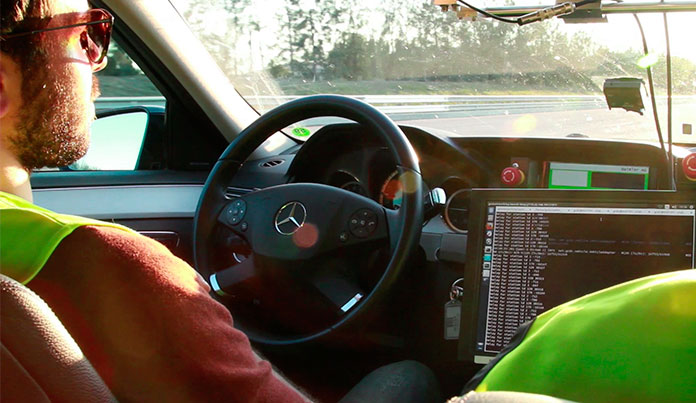Why should we trust autonomous cars?
Artificial intelligence is a hot topic which basically aims at creating objects to help us in our daily routines. However, this technology is also starting to be questioned as sometimes our wellbeing depends on it; and then, the question is raised; can we trust autonomous entities such as robots or cars?
If a critical moment comes up, what will their choice be and what should it really be? Many moral issues have come up in literature related to the topic, most of them still unsolved. In this post, we will go through technology and safety in the autonomous car world so that the experts will decide whether these entities can be trusted with tasks that human beings have always done themselves. Are you ready?
Introduction & Thesis Statement
Autonomous cars, which can also be referred to as self-driving cars, stands for a vehicle that is capable to locate itself in space and move autonomously toward its target location with very little input from humans. Literature on the topic suggests that experiments aiming at creating a self-driving car have been carried out since the 1980s by Ernst Dickmanns who create a van guided by Mercedez Benz.
Going back to terminology there are several terms that could be confused with what is actually an automated car. In the following lines, we present a few official terms coined by SAE. Probably your car may already have one of these systems related with driving assistance where the driver is expected to perform all aspects of driving but the system assists the driver through the steering wheel as well as through speed. Another automation level is what is called partial automation where the driver is still expected to do the driving and to monitor where the car goes. where the driver becomes a passenger; all tasks are performed by the car.
Now that we have been through what an autonomous car is, it is time to go deeper in the topic and dive into the technology used.
Technology used by autonomous vehicles includes SLAM algorithms (simultaneous localization and mapping) as well as Artificial neural networks (ANNs) algorithms (Machine learning-based algorithm) which enable the system to learn from the inputs it gets, thus, perfecting itself while it is being tested in several environments; every time getting closer and closer to real-world situations. Classification algorithms that imitate the neural system in the human brain such as the ANNs enable self-driving cars to adjust their reaction depending on the input they get.
Currently, Applus Idiada is working on autonomous driving safety systems and projects such as the Multi-Car Collision Avoidance (MuCCA) which use Artificial intelligence and communication systems amongst several cars in order to avoid accidents involving more than one car: Sharing information in real time and being able to make decisions based on fresh information is key for accident-avoidance systems in all kinds of driving. In 2018, we will also see the results of the NEXtTECH R&D project in which IDIADA participates developing the actuation system, the integration of different technologies and the validation of the prototype on test tracks and public roads.
- Error reduction: By erasing the ‘human factor’ there is, therefore, no human error. These self-driving cars would reduce traffic accidents significantly by eliminating the possibility of drivers checking their mobile phones while driving, drink-driving, or speeding in intersections amongst other dangerous situations.
- Cost optimization: self-driving cars are designed to be as efficient and safe as it gets, making their driving objectively more efficient than humans’. Together with connectivity a “smart city” would use cars’ data to supply information to the city’s data centre and would enable new mobility services to make it greener and more efficient.
- Urban space optimization: as there is no driver to exit the car when it is parked, urban spaces could be redistributed in a more efficient and space-saving way. Making it possible to store cars in smaller spaces without fearing for the driver’s safety, or the car’
As you can see, most of the advantages related to automated driving are related to cost optimization and, most importantly, to avoiding traffic accidents that derive from human errors. Moreover, if the self-driving car system is integrated into a city, the concept of “smart city” would become more real than ever as the non-stop flow of fresh traffic information would help make better decisions as well as a more efficient management of resources.
